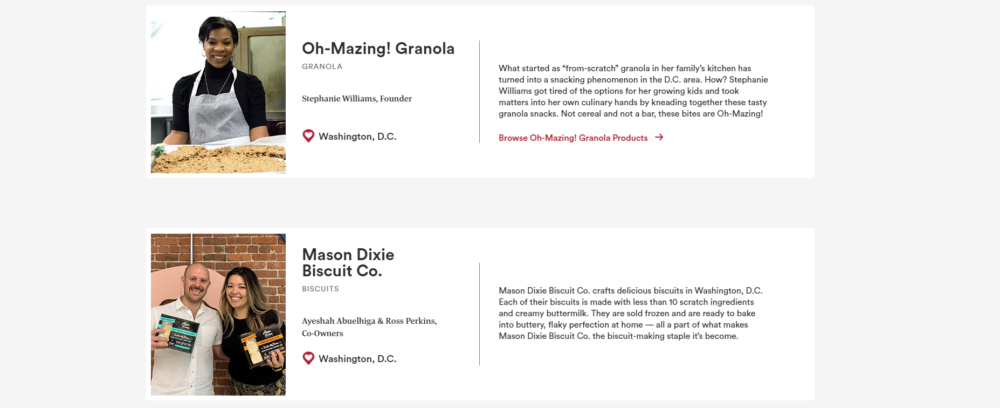This article has been contributed by Jeff Blaylock.
Communication and interaction with customers have always played a key role in a brand’s success. People like feeling that companies approach them individually, try to meet their needs, and pay special attention to their enquiries.

In the past, the companies that have managed to establish rapport with their clients have won loyalty and recognition, rewarding their brand with a special place in the market. Today, an inability to build a connection with its customers can cost a business its reputation and market share.
You’ve definitely heard about the importance of content marketing in business planning. But it’s not just important, content is now critical to driving sales. Today, businesses succeed if they can differentiate themselves from competitors by creating their own appealing story and image.
Content marketing is not only about short blog posts that companies publish to increase their website traffic. It is a much more complex and sophisticated concept that covers various aspects, from email marketing to image design. Even though it seems that there is nothing new about marketing, content marketing lives and develops, bringing fresh ideas that trigger customers’ purchasing behavior and increase conversions.
Brand storytelling is a recent trend that is being enthusiastically picked up by marketers worldwide. It is not about writing a narrative around how the company exists to make money by providing people with goods they need. It is about capturing people’s attention and establishing personal bonds with everyone from the target audience.
If you’re wondering how to tell a story so that it sears your brand into people’s memories, this article is for you.
What Is a Brand Story?
If you know nothing about company branding through storytelling or think that writing your company’s history is enough to win your customers’ hearts and minds, you need to reconsider your content strategy.
You can mention your company’s history as a part of a brand story. However, a successful brand story will be about much more than just facts about the company’s establishment and operation.
A well-written brand story encompasses both the facts and feelings that you want associated with your company. You want it to inspire an emotional reaction in your customers. It should only barely refer to history while speaking more about your business’s goals, objectives and motivations.
In fact, storytelling is innovative advertising where you can actually do without describing your brand and instead emphasize customer experience, convenience as well as shared values and principles.
Your brand story is much more than a piece of writing. The message you send to people – if written correctly – becomes word of mouth. Even those who are not your clients yet will get to know about your company via a real customer’s positive experiences.
Who Are the Authors of Your Brand Story?
It is wrong to assume that once you write a narrative, you have your brand story written. Storytelling exists in the public domain, so the rest of your brand story is what your customers write about it – how they feel, their experiences, social media discussions and more.
Have you ever wondered why brands are so determined to make their customers comment and leave their feedback? They are not only looking for confirmation that their company offered good products or services. They are also seeking opportunities to build on their brand story by provoking discussions and making sure that the word is spread.
In a world where there was only a one-way flow of information from the company to consumers, changing the direction is revolutionary. A decade ago, people deemed businesses as something abstract. They saw them as machines that offered products in return for money. Today, customers know their value. They know that corporations compete for every client because their power is their word.
Your Voice Matters
However, it is wrong to assume that companies are helpless. They still can lead their brand story by setting the mission. Customers should know what values their favorite companies have. For this, every brand should develop its own voice.
Have you ever asked why Apple stores have queues of people waiting for their new products every year? They do not offer cheap gadgets, but still, it seems that many are willing to give up their money (and a lot of it) for a brand-new iPhone. The company represents innovation. They make people believe that by purchasing Apple products, they too are innovative. Although they do offer one-of-a-kind technologies, people buy their products because of the message the company sends, the voice it has, and the illusion of exclusiveness it provides.
Thus, for your product or service to sell and for your company to thrive, you need to speak to your existing and potential customers in a clear voice that defines a social component behind your business. This voice will speak to their hearts and minds, making them feel, experience, and know that your business cares about their values, interests, aspirations, and needs. In most cases, this voice matters more than the price and product availability. People will want your products because they feel attached to your brand.
How Do You Write a Compelling Brand Story?
Writing a narrative about your brand is no easy task. It requires superior writing skills and in-depth knowledge of your business goals and target audience. You need to infect people with your brand’s spirit. Thus, here are 8 steps to putting together a killer brand story.
1. Define Your Mission and Brand Personality
You need to clearly define your business mission to ensure interesting and effective storytelling. Your entire communication and interaction with your customers should be based on the mission your business pursues and its values. Our free Brand Core Values Worksheet is a great way to find your three core values.
Once you have your mission statement and values, and know what makes your business unique in the marketplace, identify your brand’s personality and voice. Our Brand Personality Matrix will help you with this.
Constantly refer back to your mission and brand personality as you develop your brand story that will convey your brand’s values.
2. Make It Appealing
The best way to make your story appealing is to make it human. It is good to start with the motivations, impulses, emotions and desires that will help your customers see the people behind your business rather than consider it abstract. Convey your passions or the challenges your business has met along the way that have shaped the brand. Express how clients and their experiences have influenced the business concept.
To make it even more human, you can add case studies or employee stories to your story. Wholefoods does this well on their website, as shown below. Depending on what you value most in your company, you can use it as leverage for your brand narrative.
3. Study Storytelling
Storytelling is a special kind of writing that has certain tricks. To write your brand story, you need to know what typical narratives have in common. You should place the main characters at the core of your story, add some critical details to keep your audience’s attention (conflict), then finish up with revelation.
It is good if your story makes your readers want to keep reading. It is even better if your story makes your potential customers research more about your brand. Thus, you need to highlight your story’s conflict to grab the attention and keep the readers on the edge of their seats.
You do not have to write a long story. Try to make your readers transit from the conception of your business idea to the status quo. Determine the main characters and empower them by speaking out loud your business’ values. When you are done, read your story out loud to make sure it flows.
4. Make Up Your Main Characters
It is okay if your real story does not have a real character to base your story on. It can be told by a fictional character. You can empower them with any voice and any role you want while communicating the truth about your brand. Think of Ronald McDonald from McDonald’s standpoint. He is a fictional character who has been acting as a brand storyteller for decades before content marketing started playing a key role in marketing.
5. Add Visuals
To embed your story in the minds of your customers, you need to make it live. By adding images and other visuals, you can communicate more effectively whilst helping people retain information better. Think about the cavemen, they communicated visually years before languages developed. Remember, whenever you feel that your point is weak or your story lacks emphasis, you can add visuals to make your message more vivid.
6. Stay Consistent
Try to stay consistent with every value you claim to share. Customers are very good at spotting dishonesty, so it is better to stay consistent. You should avoid any contradiction that may confuse your customer. Remember that he or she will rely on their senses. If they feel as if you violated their trust, you are likely to lose a part of your audience.
7. Make a Difference
Customers find it very important to know how you want to make a difference. It is good if your brand story hints at common social problems that were resolved within your office. It is even better if you can tell how you try to make this world a better place by solving problems at the community level.
8. Activate Your Story
Okay, now you have a story. What’s next? Now you need to effectively share it with your potential customers. You need activation in the market. For this, it is better to think about where your customer would find right for discovering your brand story. It could be a website, magazine, email or on social media.
Remember, your brand story is as important for your marketing team as it is for your customers. A well-written brand story will help them come up with advertising ideas and campaigns that are aligned with your primary goals and purpose. If this really works, your brand story will naturally bring about lead generation.
Wrapping It Up
Writing a great brand story requires time and effort. You need to share your history, values, passion, and ambitions in the way that will best establish an emotional connection with your target audience. You need to start with an understanding of your customers, employees and competitors, and be clear on what defines your business and makes it unique.
What’s more important, your brand story needs to be honest and consistent. It must align directly with your mission statement to enable you to effectively establish a connection with customers who are genuinely aligned with your business.
_
About the author: Jeff Blaylock is a content writer who has studied the role of mission and vision statement in brand awareness and success.


